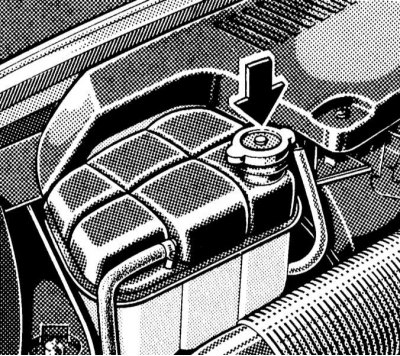Attention! Do not allow antifreeze to come into contact with exposed areas of the body and painted surfaces of the car.
Wash off accidental splashes with plenty of water without delay.
Remember that antifreeze is a highly toxic liquid and getting it into the body, even in small quantities, is fraught with the most serious consequences, even death.
Never leave antifreeze stored in a loosely closed container, immediately collect spilled coolant on the floor.
Remember that the sweet smell of antifreeze can attract the attention of children and animals.
Consult with local authorities about ways to dispose of used coolant - in many regions of the world there are special points for receiving various kinds of waste. Never drain old coolant down the drain and onto the ground!
Note. Recently, non-toxic grades of antifreeze have been developed, however, they must also be disposed of in an organized manner.
Coolant
The cooling system is filled year-round with a mixture of water, antifreeze and anti-corrosion agent. This prevents rust and corrosion, salt deposits and, in addition, increases the boiling point of the coolant. Excessive pressure is created in the cooling system due to the expansion of the liquid when heated, which also leads to an increase in the boiling point of the coolant.

The pressure is limited by a valve located in the cover of the expansion tank, which opens at a pressure of 1.4-1.6 bar.
The engine cooling system requires an elevated boiling point for the coolant to function properly. At low evaporating temperatures, vapor lock may form, resulting in reduced fluid circulation and poor engine cooling. Therefore, the cooling system must be filled with a mixture of water and the listed additives to it all year round.
